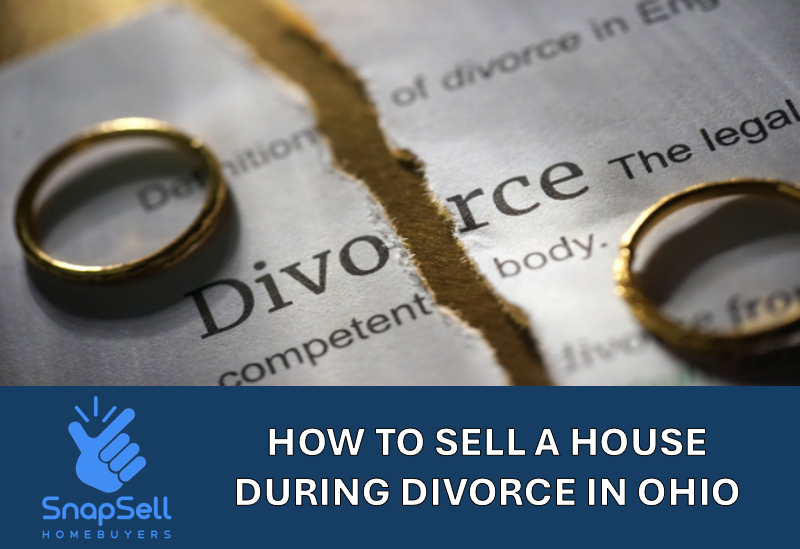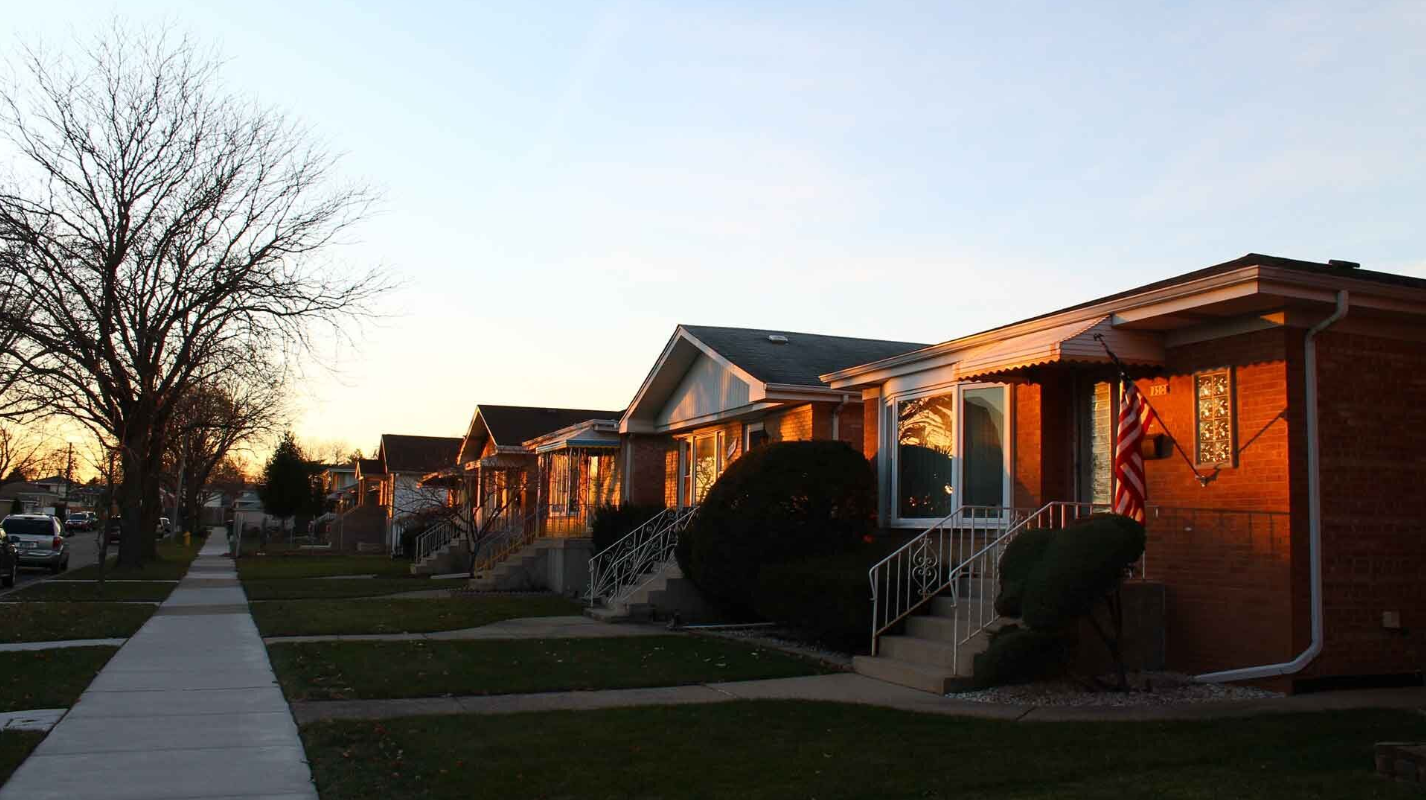
Selling a House During Divorce in Ohio
Divorce can be a difficult and emotional experience, and the process becomes even more complicated when selling a home is involved. If you’re going through a divorce and need to sell a house in Ohio, this guide will walk you through the key steps, legal considerations, and practical advice to help make the sale as smooth and stress-free as possible.
Who Gets to Stay in the House During a Divorce in Ohio?
In Ohio divorce cases, either spouse may stay in the marital home, or both can choose to move out. If they can’t reach an agreement, the court can issue a temporary possession order, which often prioritizes the custodial parent to reduce disruption for the children. The court considers factors like each spouse’s financial ability to maintain the home, contributions to the home (financial and non-financial), and the children’s needs.
Ohio Property Division Laws for Selling Your Home During Divorce
Ohio follows equitable distribution laws in divorce cases, meaning property is divided in a way the court deems fair, rather than automatically splitting it 50/50. To determine a fair division, the court considers factors such as each spouse’s contributions to the marriage, their income, and their post-separation needs. The family home often makes up a large share of a couple’s assets, making its division a key factor in divorce proceedings.
Key Points: Ohio Divorce Law
Marital Property vs Separate Property: Start by determining whether the home is marital property, meaning it was acquired during the marriage, or separate property, which includes assets owned by one spouse before the marriage or received as a gift or inheritance. Only marital property can be divided.
Court Approval: If the house is considered marital property, selling it may require court approval. This helps ensure that the sale benefits both spouses and any children involved.
Equity and Proceeds: The equity in the home, which is the property’s value minus any outstanding mortgages or liens, is taken into account when dividing assets. Any proceeds from the sale are distributed according to the terms of the divorce decree.
Steps to Sell Your House During a Divorce in Ohio
Step 1: Agree to Sell
Both parties need to agree before the house can be sold. This can be achieved through mediation or by negotiating with the assistance of your divorce attorneys if needed.
Step 2: File a Motion
When divorce papers are filed in Ohio, a standard mutual restraining order is often put in place. This order helps preserve the status quo by preventing either spouse from making major financial changes or draining marital assets while the case is active.
If a mutual restraining order is in place, work with your attorney to file a motion asking the court for permission to sell the home. Be sure to explain why the sale benefits both parties.
Step 3: Decide How You Want to Sell the Property
There are three options to choose from when selling a house during a divorce. Each option has clear benefits and drawbacks depending on the condition of the property and your circumstances.
List with a Real Estate Agent
A realtor can list and sell your home on the open market, but their fees can be significant. Typically, both the buyer and seller have agents, and commissions can amount to as much as 6% of the sale price. Additionally, if you’re going to list it on the MLS, you’ll likely need to spend time cleaning the property and making repairs to attract buyers.
If you do choose to work with a real estate agent, make sure to select one who’s familiar with the complexities of selling a home during a divorce. They can offer an unbiased perspective and help ensure smooth communication between both parties.
Sell For Sale By Owner
For sale by owner (FSBO) is an attractive option for sellers looking to avoid realtor commissions. However, these sales require close collaboration with your spouse to coordinate showings and negotiate with buyers, which isn’t always possible if your relationship is contentious.
Sell to a Cash Home Buyer
A cash home buyer can close quickly, often in days or weeks, and will purchase your home “as-is,” eliminating the need for costly repairs or lengthy inspections. This reduces negotiation, uncertainty, and delays that often come with traditional buyers. By providing a faster, simpler, and more reliable sale, cash home buyers help divorcing couples move forward with less stress and greater financial clarity.
Is it Better to Sell Your House Before Divorce or After Divorce?
Selling before the divorce can make things simpler because turning the house into cash makes it easier to divide fairly. It can also reduce arguments over mortgage payments, maintenance, and ownership. Also, if the housing market is strong, it might help you get the best price possible.
Waiting to sell until after the divorce can give both spouses some emotional breathing room and more time to plan the sale carefully. You might even be able to make improvements that increase the home’s value. In some cases, there could be tax benefits, or one spouse might need to stay in the home for the kids for a while. Other things to think about include whether the court needs to approve the sale, the state of the real estate market, and whether either spouse can handle ongoing costs like mortgage and maintenance in the meantime.
In general, selling before the divorce tends to be easier if both parties can agree because the process is easier. But every situation is different, and only you and your spouse can decide what’s right.
The Effect of Taxes on the Sale of the Family Home During an Ohio Divorce
When you sell a family home during a divorce in Ohio, taxes can have a significant impact on your final proceeds. The most common tax concern is capital gains tax, the tax on the profit from the sale of the home. Under Section 121 of the IRS Code, if you’ve lived in the home for at least two of the last five years, you may qualify for an exclusion of up to $250,000 in gains for single filers, or $500,000 if you’re still considered married for tax purposes when you sell. This is known as the “121 exclusion” and can help you avoid paying taxes on a substantial portion of the profit.
Timing also matters: selling before the divorce is finalized can sometimes allow you to take advantage of the higher $500,000 exclusion, while selling after the divorce might limit you to the single-filer $250,000 exclusion.
What is the 121 Exclusion in a Divorce?
Here’s a simple breakdown of the “121 exclusion” for Ohio sellers:
| Timing of Sale | Capital Gains Exclusion | Who Qualifies | Potential Tax Impact |
|---|---|---|---|
| Before Divorce is Finalized | Up to $500,000 tax-free gain | Married couples filing jointly who meet the 2-out-of-5-year residency requirement | A larger exclusion can reduce or eliminate capital gains tax entirely |
| After Divorce (Single Filing Status) | Up to $250,000 tax-free gain | Individual sellers who meet the residency requirement | A smaller exclusion may lead to capital gains tax on a larger portion of the profit |
| Neither Meets Residency Requirement | No exclusion | Seller(s) who haven’t lived in the home for at least 2 of the last 5 years | All gains may be subject to capital gains tax |
| Ohio State Taxes | No separate capital gains tax | — | Follows federal capital gains rules; only property taxes and transfer fees may apply |
Alternatives to Selling During a Divorce in Ohio
One Spouse Buys Out the Other
If one spouse wants to keep the home, they can buy out the other’s share of the equity. This might be done with cash, refinancing the mortgage, or offsetting the value with other marital assets (like retirement accounts or vehicles). However, spouses need to be amicable enough to agree on the home’s value, which can be challenging when going through a separation.
Co-Ownership After Divorce
Some couples agree to continue owning the house together, even after the divorce is final. This can be short-term (until the kids finish school) or longer-term as an investment property. It requires a clear written agreement outlining responsibilities for mortgage payments, taxes, maintenance, and the eventual sale.
Transfer as Part of Property Division
The home can be awarded to one spouse entirely as part of the divorce settlement, with the other spouse receiving other assets of equal value. This option works best when the value of other marital property is high enough to balance the division.
Sell Your House During Divorce in Ohio FAQ
Can I Sell the House Before the Divorce Is Final?
Yes, you can with permission from the court.
What Happens if Your Ex Refuses to Sell Your House During a Divorce
If the court ordered the house to be sold as part of the divorce settlement, you’ll need to file a motion with the court to enforce these provisions of your separation agreement, which may include asking the court to hold your ex in contempt for failing to comply.
How Does a Prenuptial Agreement Affect Selling Your House in an Ohio Divorce?
A prenuptial agreement can significantly simplify the sale of a house by clearly defining ownership, division of proceeds, and responsibilities. If the prenup specifies which spouse owns the home or how its equity is treated, it can prevent disputes over who stays in the house, who can sell, and how proceeds are split. It may also outline responsibilities for ongoing costs like mortgage payments, insurance, and taxes until the sale is complete. By setting these rules in advance, a prenup can streamline the selling process, reduce conflict, and minimize the need for court intervention.
Easiest Way to Sell a House During a Divorce in Ohio
Divorce is never easy, and selling a home during this time can make it even more complicated. Emotions run high, and navigating the legal requirements can be overwhelming. Snap Sell Homebuyers is here to help. Our experienced team can assist you in selling your Ohio home for cash, making the process smoother and less stressful.
Ohio cash home buyers can be the fastest option when selling a home during a divorce. Divorce is hard enough, which is why we make the entire sales process as easy as possible. You won’t have to make any repairs, do any cleaning, or remove any furniture you don’t want to take with you. Also, we can even let you stay in the home after closing so you have the time and cash to move on with dignity.
Home sellers in Akron, Cleveland, Canton, Cuyahoga Falls, Massillon, Parma, Westlake, Lakewood, Medina, Strongsville, and more have successfully sold their marital property to us. If you want to learn more about how we can help you sell your Ohio property, reach out to us today or fill out the form below!
Snap Sell Homebuyers Makes Selling a House During a Divorce Easier and Faster
Tips For Selling A House During Divorce In Ohio | Sell A Home Before Or After Divorce in Ohio | Who Gets The House When Divorcing In Ohio | Sell Your Home When Separating

